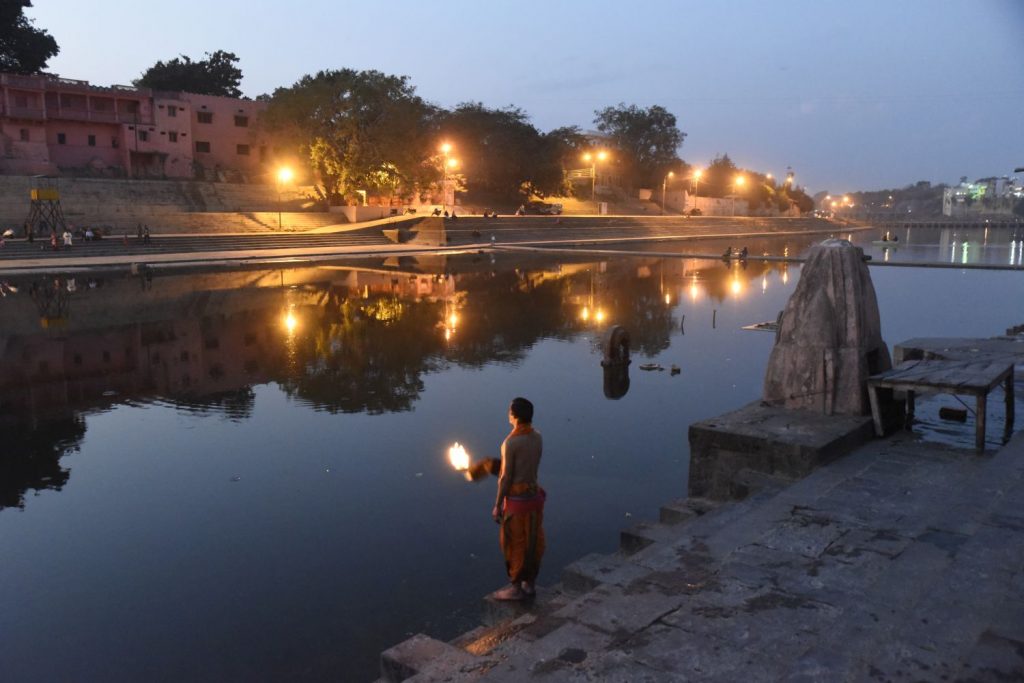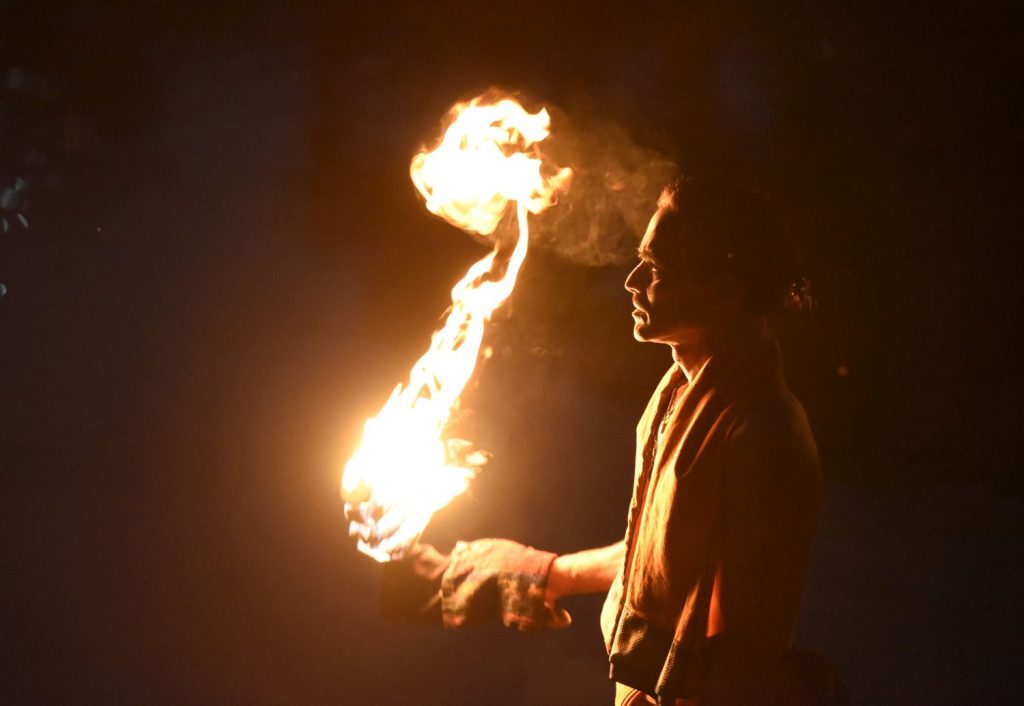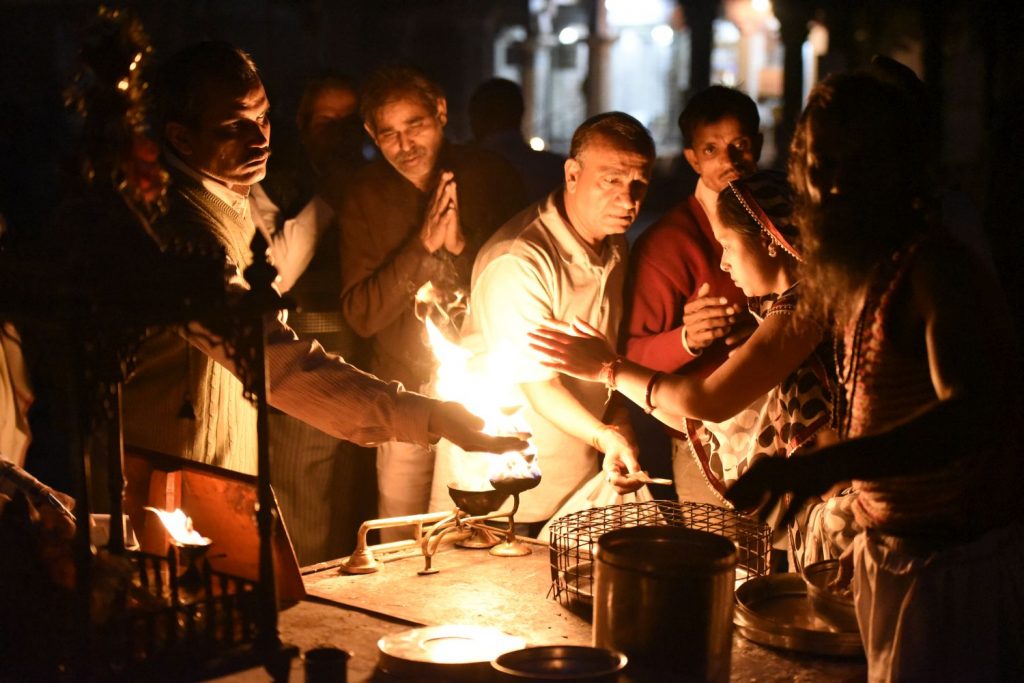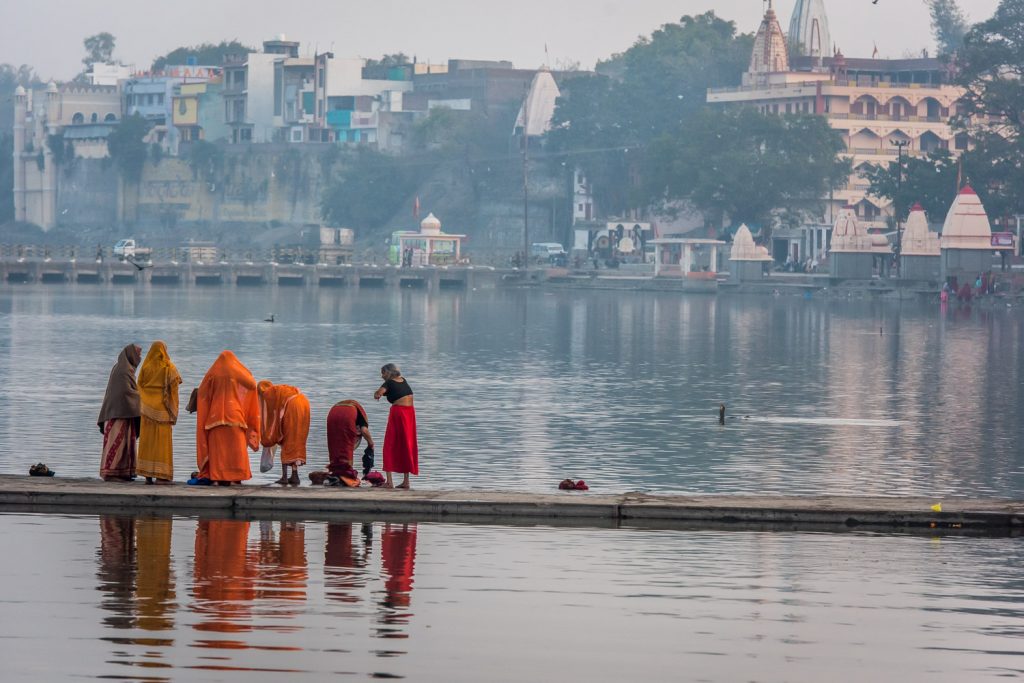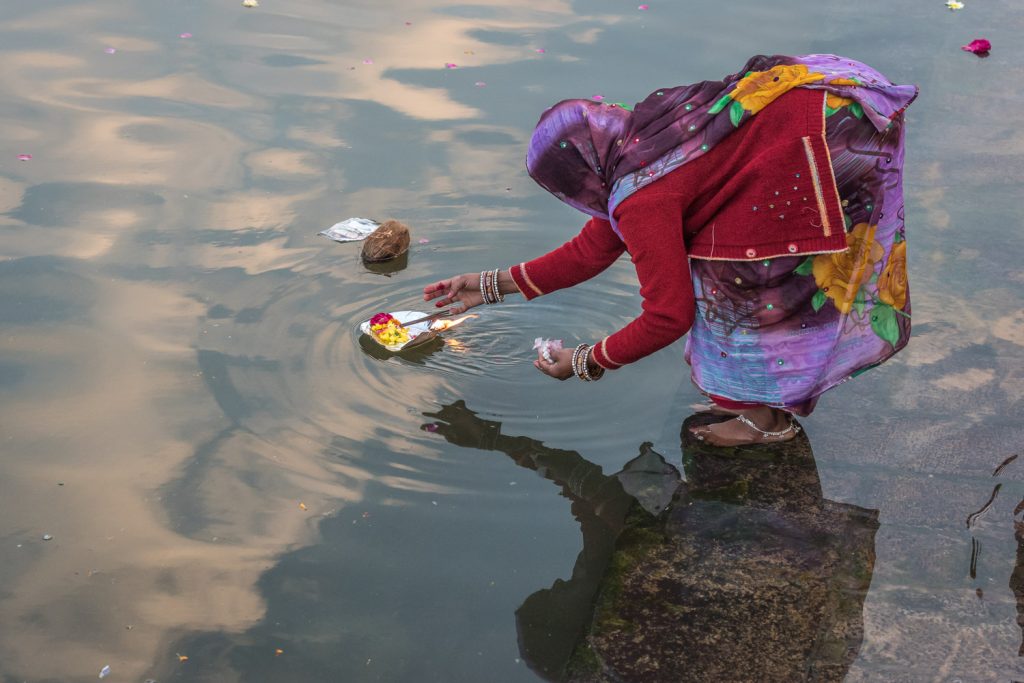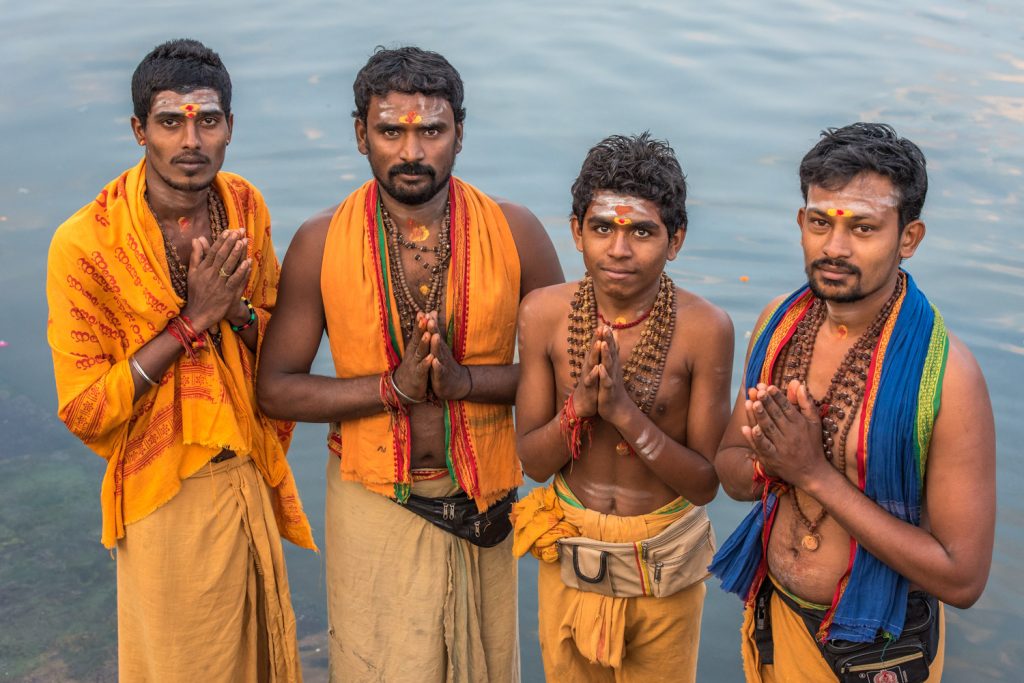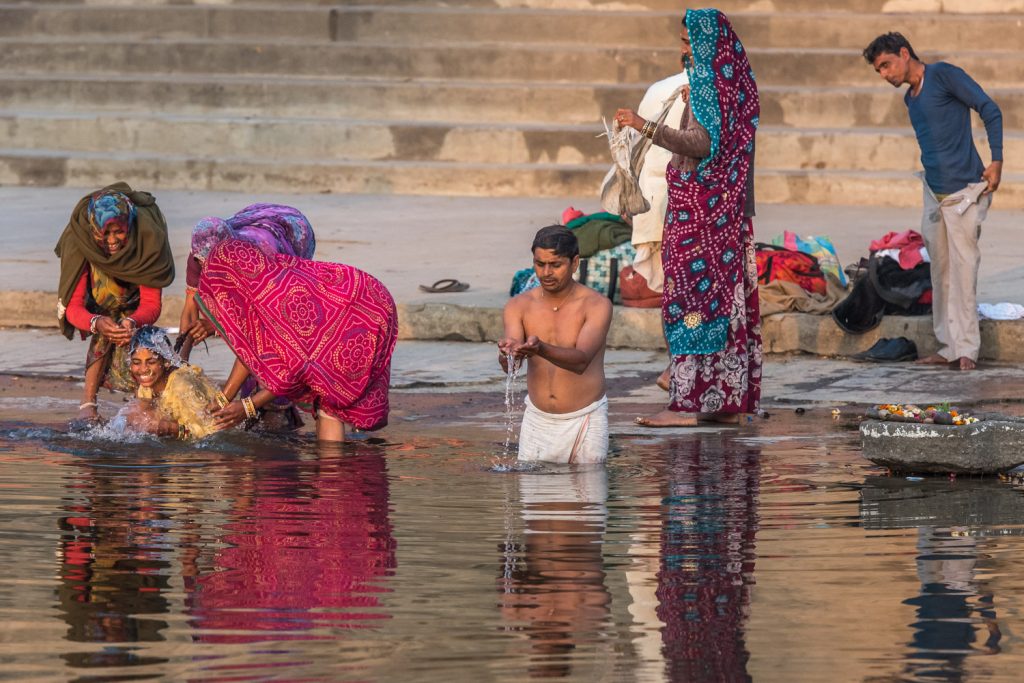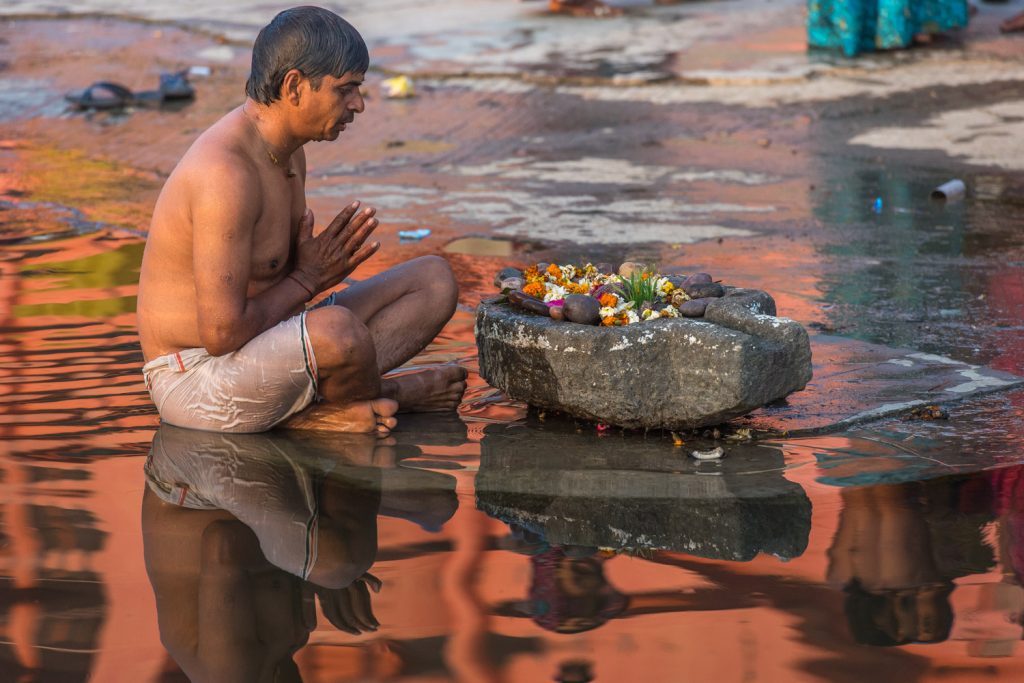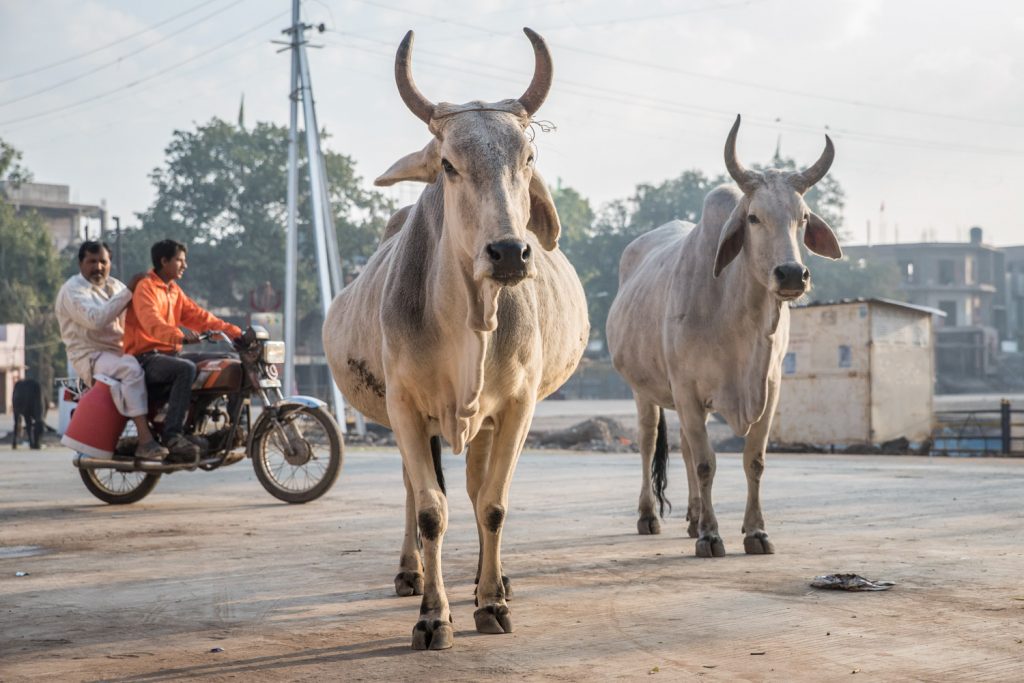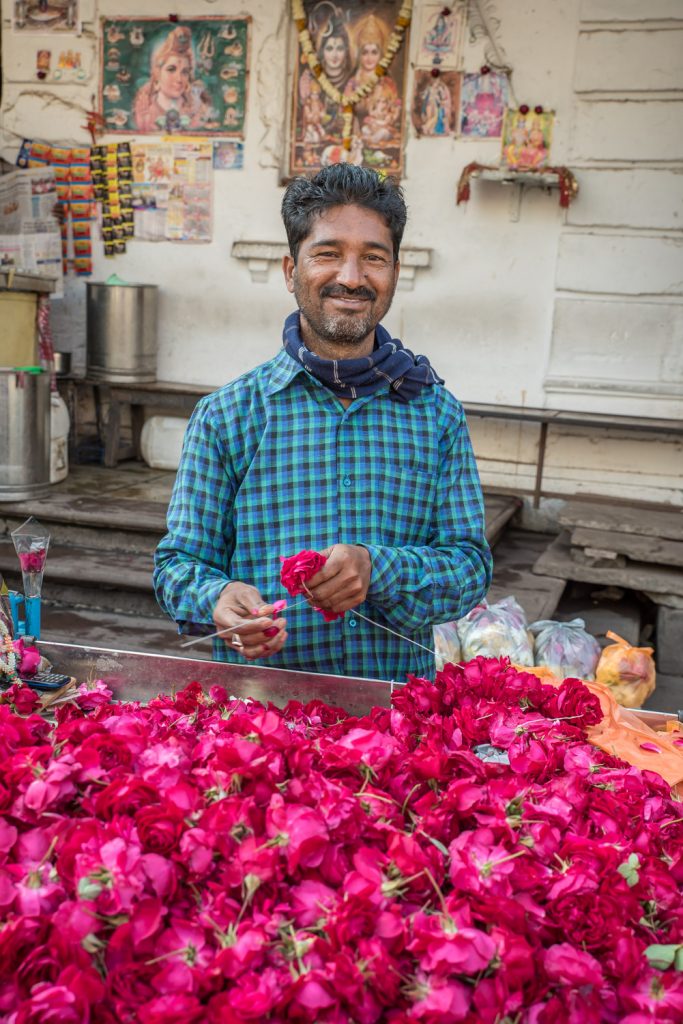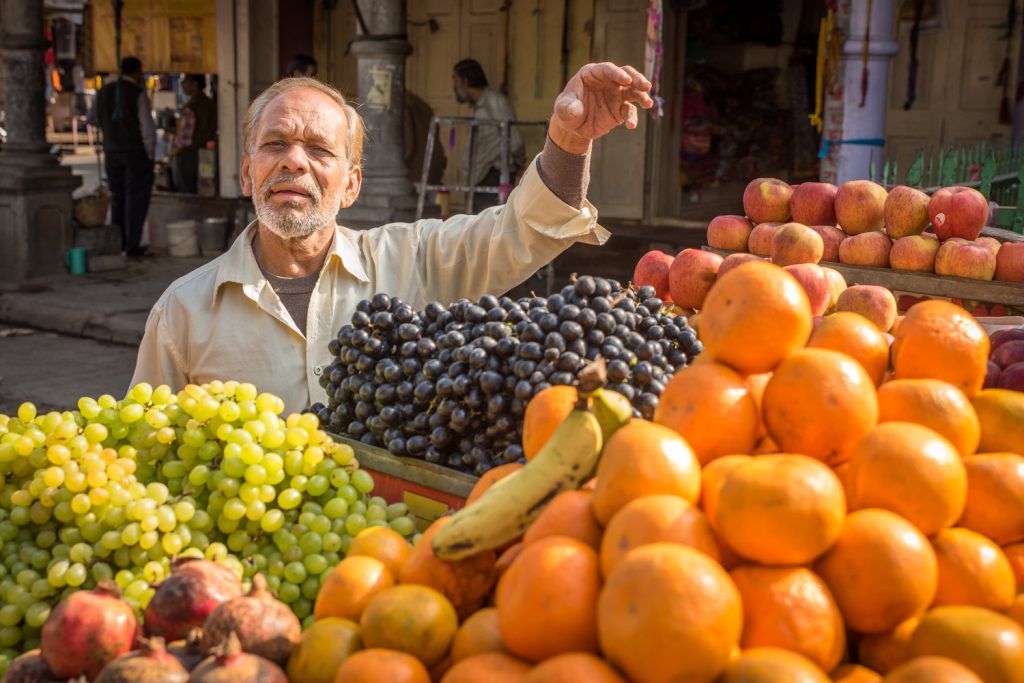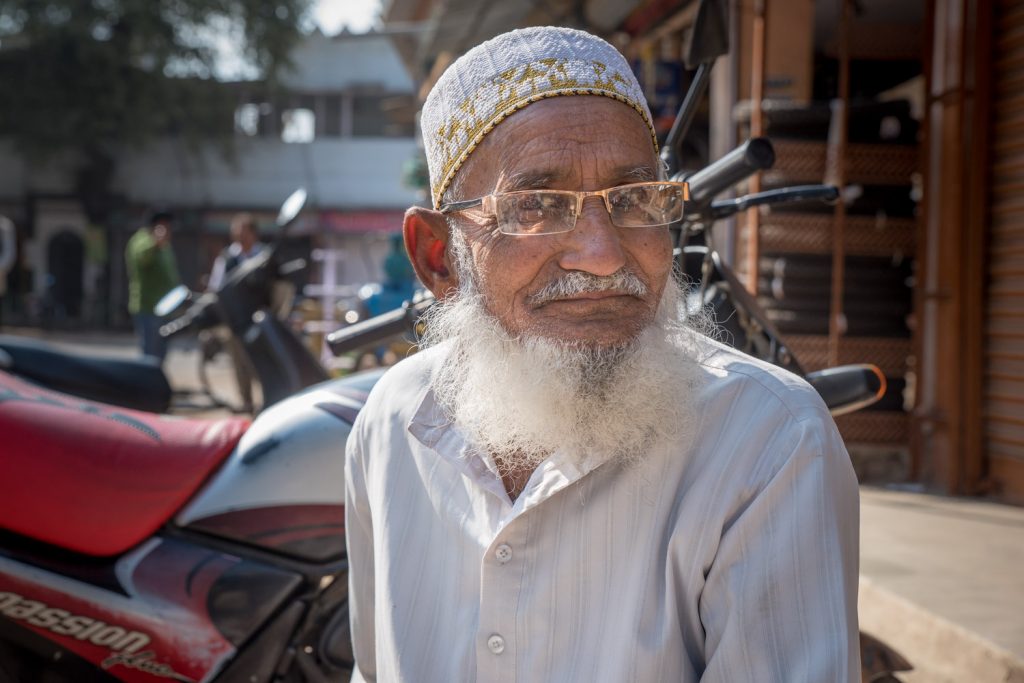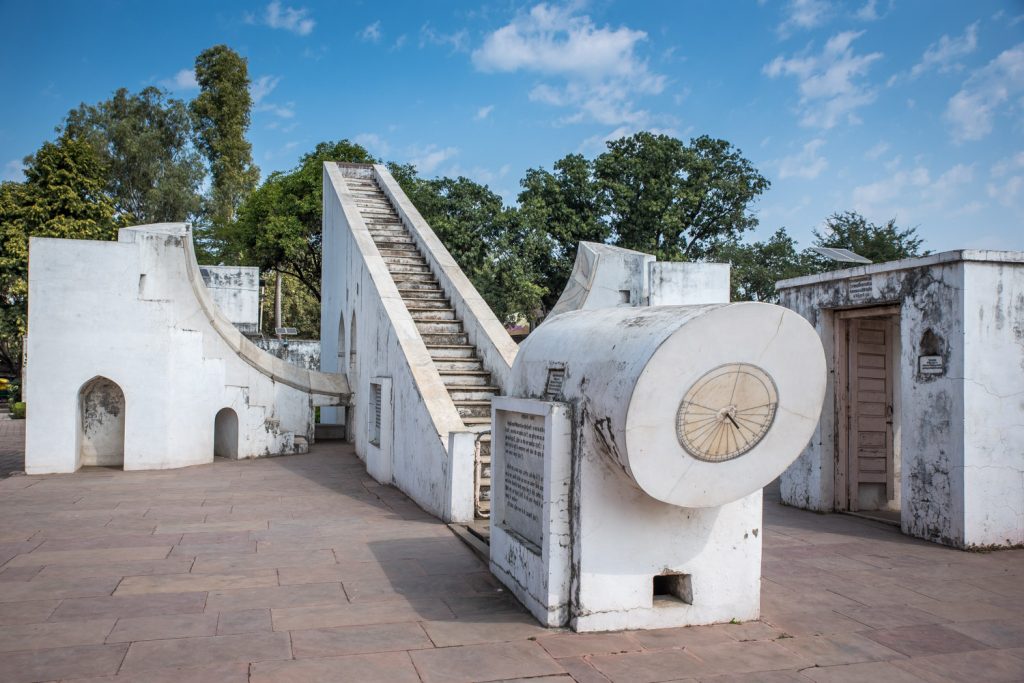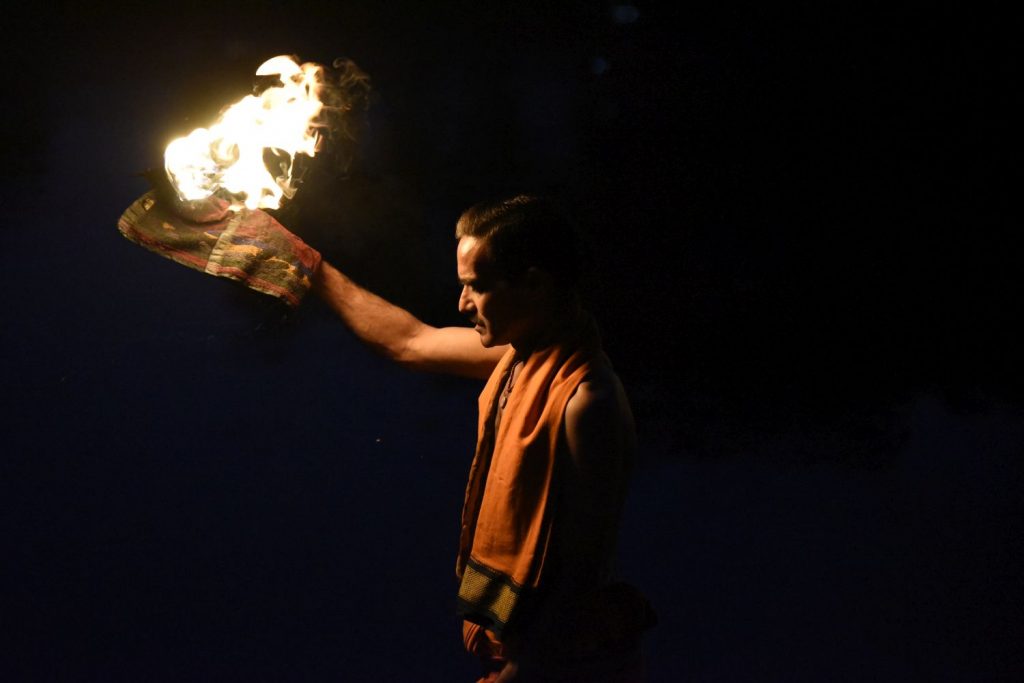
What I liked about Ujjain is that it’s off the main beaten tourist track and so there was relatively little harassment of foreigners by touts. Yet, at the same time, Ujjain is an important holy city, one of the four hosting enormous Hindu religious festival, the Kumbh Mela, every 12 years. Next year, in 2016. it’s Ujjain’s turn to host it again.
I don’t know how many people it actually draws. Some of the local people told me it will draw the same as Allahabad, which drew almost 35 million people on a single day. I find that hard to believe though as the river in Ujjain, the Shipra, is much smaller than the Ganges and I didn’t see the kind of large areas to accommodate pilgrims as I saw in Allahabad or Haridwar.
I was up before dawn on my one full day in Ujjain (I stayed two nights) to get an auto rickshaw from the nearby clock tower to Ram Ghat, where people bathe in the river and perform their rituals. The golden light on the temples and reflected in the water as the sun came up created some beautiful scenes.
I visited several of the temples nearby to photograph their interiors and some of the rituals going on, as well as their peaceful settings. Harsiddhi Mandir and Gopal Mandir were the two main ones. The first had two blackened stone towers at the front that are apparently lit with lamps during festivals. The latter had some silver plated doors that were at one time pillaged and taken to Afghanistan, then later to Lahore, Pakistan, before finally being taken back.
The Vedh Shala is an observatory built in 1730 and used to calculate time and celestial events. I took an auto rickshaw to the south of the city to visit it. It is apparently still in use, although I’m not sure to what extent. The technology was very sophisticated at the time it was built, but I suspect it’s not up to today’s standards.
I decided to give the main temple, Mahakaleshwar Mandir, a pass because it was very crowded, there was heavy security and I would have had to check my camera at the cloak room.
Instead, I enjoyed wandering through the bazaars, where I found people friendly without any of the hard sell found in more touristy places. A number of young men and merchants even asked me to take their photos, so I had some interesting and willing subjects.
I took a nap in my hotel room in the afternoon, but there was loud banging construction in the next room, so I had to wear earplugs. Suddenly I heard the bathroom wall partially collapsing and masonry tumbling across my bathroom floor. They were apparently fixing the water pipes. I shrugged it off as typical India, but later they offered me a new room.
After the nap I hunted around for a cyber cafe to copy my photo files, but as mentioned in my last post, I lost access to them due to a virus. As the files still appear to be on the memory stick, I’m hopeful I can recover them when I return home and can use some sophisticated recovery software. I lost my photos of Sanchi, Bhopal and everything I’d taken early that day in Ujjain.
That evening, I returned for sunset at Ram Ghat, to watch and photograph the evening Hindu rituals. It was certainly not on the scale of Varanasi, but it also seemed a little more intimate and less like something put on as a performance for visitors.
The next morning, Thursday, Feb. 12, I left on an early train to Udaipur in the state of Rajasthan. It was an all-day trip, but fortunately I had a 2 AC sleeper, the lower of two bunks, so was able to spread out and nap or read during the long journey. It wasn’t crowded, and the trip passed quickly, and I arrived in Udaipur after dark.
